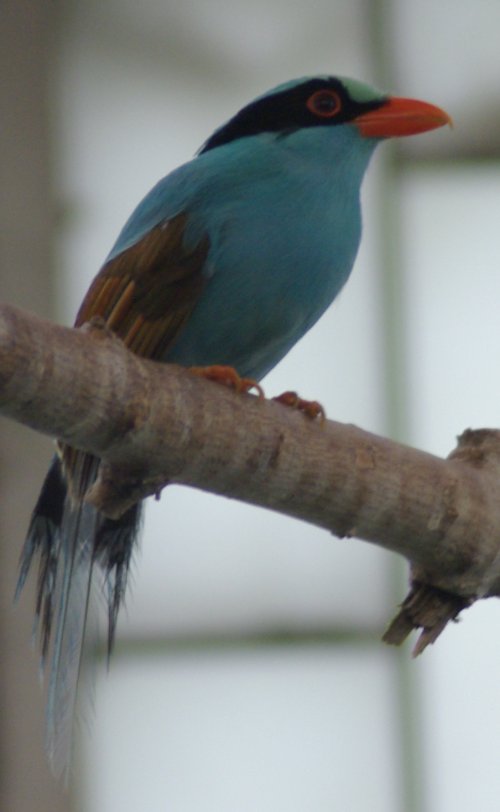Green Magpie
From Wikipedia, the free encyclopedia
Order: Passeriformes
Family: Corvidae
[Photo] Green Magpie (Cissa chinensis), National Zoo, Washington DC. Date June 12, 2007. Author TomR (Thomas Ruedas)
The Green Magpie (Cissa chinensis) is a member of the Crow family, roughly about the size of the Eurasian Jay or slightly smaller. It is a vivid green in colour, slightly lighter on the underside and has a thick black stripe from the bill (through the eyes) to the nape. The tail is quite long and tapered with white tips. This all contrasts vividly with the reddish fleshy eye rims, red bill and legs. The wing primaries are reddish maroon also and make this one of the most striking and distinctive members of the whole family.
It is found from the lower Himalayas in north eastern India in a broad south easterly band down into central China, Malaysia, Sumatra and northwestern Borneo in evergreen forest (including bamboo forest), clearings and scrub.
This bird seeks food both on the ground and in trees, and takes a very high percentage of animal prey from countless invertebrates, small reptiles, mammals and young birds and eggs. It will also take flesh from a recently killed carcass.
The nest is built in trees, large shrubs and often in tangles of various climbing vines. There are usually 4???6 eggs laid.
The voice is quite varied but often a harsh peep-peep. It also frequently whistles and chatters.
http://en.wikipedia.org/wiki/Green_Magpie
| The text in this page is based on the copyrighted Wikipedia article shown in above URL. It is used under the GNU Free Documentation License. You may redistribute it, verbatim or modified, providing that you comply with the terms of the GFDL. |
|

